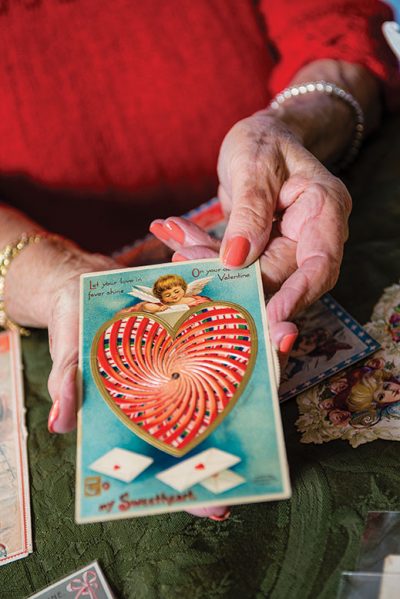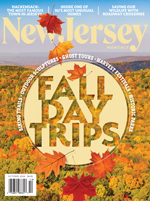
For Nancy Rosin, Valentine’s Day is more than a holiday. It’s the source of a passion she’s been pursuing for more than 40 years.
That’s evident from a visit to her Franklin Lakes home, where Rosin shows off a sample of her valentine-related collection of about 10,000 items. They range from valentines sent by Civil War soldiers and a miniature Cupid made of glass to elaborate paper-cut cards from the 19th century and bookshelves filled with volumes on valentines.
“The handmade pieces in my collection are among my favorites,” says Rosin, a retired nurse. Such cards bear “the fingerprints of love,” she explains. “They were made from the heart.”
Rosin was drawn by the sentiment conveyed in valentines, particularly before mass production of cards began in Great Britain in the mid-19th century. “Paper was expensive, and people would often take a great deal of time to make valentines in their home,” she says. “It was tender and romantic; the most personal communication between people.”
A favorite example is a valentine with a lock of hair from the sender. “It was the ultimate love token,” Rosin says.
Other enclosures had specific meanings. “Supposedly, if a woman received gloves for Valentine’s Day and wore them to church on Easter Sunday, it was the acceptance of a marriage proposal,” she says.
A floral design could deliver a message without words, says Rosin. “A red rose means love; a pansy signifies thoughtfulness, or ‘thinking of you.’ It can be very detailed.”
The tradition of mailing valentines has changed over the years. “Envelopes were generally not used until there was a universal postal system and a uniform system of prepaid stamps [1840 in the United Kingdom, 1847 in the U.S.] Before that time, letters were paid for by the recipient, with the rate dependent on the distance traveled and the weight. Valentines were often folded and sealed with wax.”
Over the years, Rosin, 75, has developed a reputation as a valentine researcher and scholar. She has served as president of the National Valentine Collectors Association since 2009; from 2013 to 2016, she was president of the Ephemera Society of America. She posts commentary and articles on the subject at victoriantreasury.com.
In 2015, Rosin began organizing the Metropolitan Museum of Art’s collection of valentines and writing descriptions for its online catalog. She’ll be blogging this month about valentines for the museum’s website.
“It’s a wonderful contribution,” says Freyda Spira, an associate curator for the museum’s drawings and prints department. “We have more than 5,000 valentines in our collection, and many of them have not been cataloged.”
Rosin’s interest in valentines is itself a love affair. “Collecting is such an incredible enhancement to one’s life,” she says. “It gives you many opportunities to meet people, expand your knowledge…and embrace history.”
As might be expected, Rosin’s late husband, Henry, who died in 2016, supported her efforts. “He told me, ‘If you’re going to do this, make it the best collection that exists.’ That was the goal—to always look for the best.”



